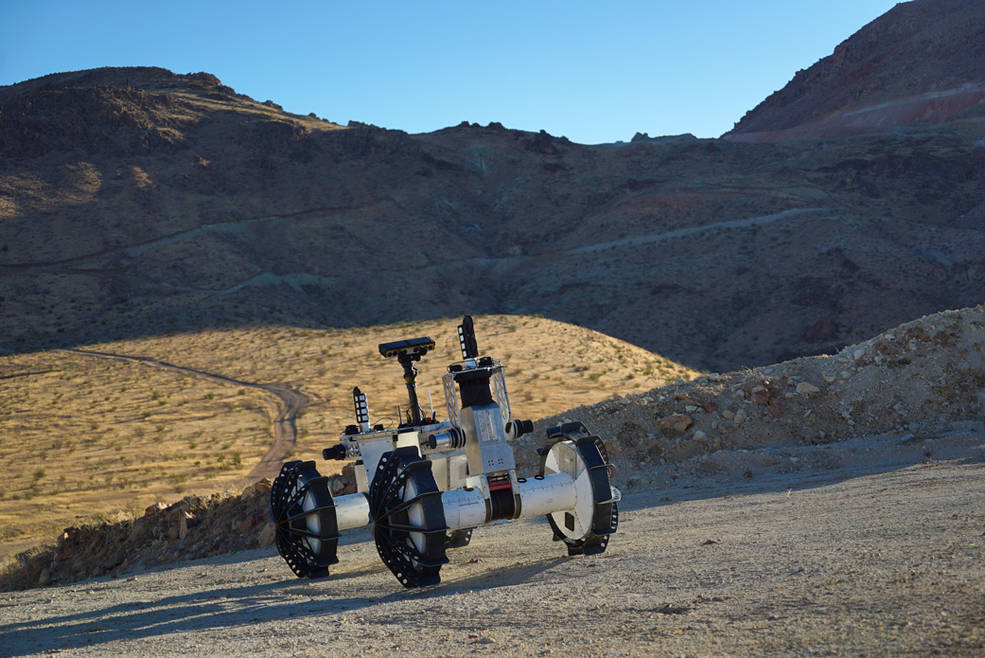
Jet Propulsion Laboratory NASA has developed a new prototype of the DuAxel rover. Despite the similarity to other rovers, DuAxel is much more maneuverable as it consists of a pair of two-wheeled vehicles.
NASA has released a record of the Duaxel rover tests. The two-wheeled front part of the all-terrain vehicle can be detached and work autonomously for some time. It remains connected to the rover by the cable, but can move independently. This design makes it possible to explore hard-to-reach places and relief terrain.

Photo: NASA
The rover was tested in the California Mojave Desert. During the tests, the developers worked out the details of the system's maneuvers. So, having stopped, the all-terrain vehicle lowers the chassis and fixes it to the surface. Then the detached part - the two-wheeled Axel robot - travels over a very uneven slope. He descends on a cable that serves to support him and at the same time is a source of power. Before going elsewhere, the wheel part comes back and docks with the other half.
The developers believe that the technology used to create DuAxel will help study not only Mars, but also other rocky planets in the solar system. The DuAxel rover is designed to study the walls of craters, pits, ledges, ventilation holes. Unfortunately, its exact mission has not yet been worked out.
According to JPL robotics technologist Issa Nesnas, DuAxel has performed well in field tests. He has successfully demonstrated the ability to navigate rough terrain, anchor and undock the other half. Nesnas believes that DuAxel opens up a great opportunity for scientists to explore the hard-to-reach regions of the Moon, Mars, Mercury and even Jupiter's moon Europa .
On two wheels
The idea of creating two-wheeled vehicles appeared in the 90s of the last century, when NASA began to study the ideas of modular reconfigurable and self-healing all-terrain vehicles. Then the idea of Axel modular rovers was presented. One of the tasks that such vehicles solved was to ensure the consistency of work and reduce the likelihood of a device failure. So, if one Axel breaks, another will take its place.
The Axel Rover system represents a family of platforms designed for mobility. The base rover Axel has a symmetrical design with three drives. Three drives allow the rover to move along arbitrary paths, turn in place and roll over in operation.

Photo: NASA
The relief of a number of Mars heights is too complex for traditional Mars rovers: Curiosity or Perseverance . Both are designed for crossing slopes with a slope of no more than 30 degrees. Therefore, Nesnas and his team began work on a new all-terrain vehicle with a much higher cross-country ability.

Photo: NASA
According to one of the projects, they wanted to tie Axel to the lander. The cable was planned to be used not only to descend to the crater or along the steep canyon wall, but also to supply energy and communicate with the landing module. The wheels of such an all-terrain vehicle could be equipped with lugs, and all kinds of sensors, drills and soil sampling systems can be placed in the wheel hubs.
